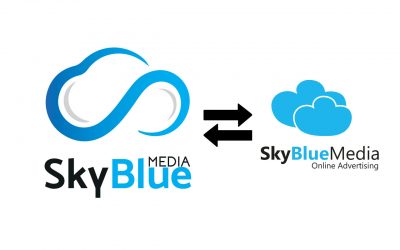In today’s digital age, web design has become an essential tool for businesses of all sizes. Small businesses in particular can benefit significantly from investing in good web design, as it can help to establish a professional image, improve user experience, increase search engine visibility, generate leads and sales, build customer loyalty, and stay ahead of the competition.
Good web design can be the difference between success and failure for a small business. It is essential for creating a positive first impression, providing useful information to customers, and helping attract and retain customers.
A well-designed website can help build a strong brand identity and differentiate a business from its competitors. It can also provide an avenue to reach a larger audience and take advantage of opportunities in the marketplace.
Establishing a Professional Image
By creating a professional image, businesses of all sizes can benefit from increased customer trust and loyalty. This can be accomplished by leveraging technology to create connections, optimising design, and driving engagement.
In order to establish trust, it is important for businesses to invest in a web design that is professional, user-friendly, and visually appealing. A website design that is modern and visually appealing will help customers better understand the purpose of the business. Customers should be able to find what they are looking for quickly and easily. This helps to build trust and loyalty, as customers can have confidence that the business is reliable and professional.
Additionally, having a website that is mobile responsive is essential, as many users access websites from their smartphones and tablets. By investing in professional web design, businesses can create a positive user experience and make a positive impression on their customers. This helps to build trust and loyalty, encourages customers to return, and can lead to increased sales.
Investing in web design is an important part of creating a successful small business, as it helps to build relationships and helps small businesses stand out from the competition.
Enhancing User Experience
It’s essential for successful online marketing to enhance user experience. To do that, businesses must provide customers with an easy-to-navigate platform and a positive experience. Personalizing content, eye-catching visuals, interactive elements, mobile optimization, and responsive design are all vital components for success. Personalizing content allows businesses to show products and services that meet customers’ specific interests. Visuals like images and videos can draw customers in, while interactive elements like quizzes and polls engage them and keep them on the website longer. Mobile optimization allows customers to access the website from any device, while responsive design ensures consistency across all platforms.
A great user experience can have a huge impact on a business’ success. Satisfied customers are more likely to come back and make more purchases. Optimizing web design ensures customers have a positive experience, and also establishes the business’ credibility and reliability. This is important for attracting new customers and boosting the business’ reputation. Investing in optimized web design also encourages customer loyalty and more website visits.
By personalizing content, incorporating engaging visuals, adding interactive elements, optimizing for mobile devices, and utilizing responsive design, businesses can create an enjoyable user experience that will keep customers coming back. Enhancing user experience is essential for successful online marketing, and making the effort to do so can be highly rewarding.

Improving Search Engine Visibility
Improving Search Engine Visibility is essential for increasing website traffic and visibility online. To reach this goal, businesses must implement a range of tactics, such as optimizing content for search engines, mobile optimization, keyword research, tracking analytics, and using social media.
Optimizing content involves using the right words and phrases to ensure that webpages appear in search engine results when users search for relevant topics. Mobile optimization ensures that webpages are optimized to be displayed on mobile devices, which are increasingly popular. Keyword research enables businesses to identify the words and phrases that are most relevant to their target customers, and then use those words throughout their website.
Tracking analytics allows businesses to understand how people interact with their website and identify any areas that need improvement. Last, but not least, businesses must use social media to engage with customers and increase their visibility online.
Businesses can take advantage of tools such as Google Analytics to monitor their website’s performance and identify areas for improvement. Additionally, businesses should consider hiring a professional SEO specialist to ensure that their website is fully optimized for search engine visibility.
Companies should also stay up to date with the latest SEO trends and techniques in order to remain competitive in the digital market. Implementing the right strategies can have a significant impact on a business’s ability to be found online, and can ultimately result in more website traffic and more conversions.
By implementing a range of tactics to improve search engine visibility, businesses can increase their website traffic and customer engagement. This can, in turn, help businesses develop a strong online presence and grow their customer base.
To maximize their visibility, businesses should stay up to date with the latest SEO trends, use the right tools and analytics, and consider hiring a professional SEO specialist. Doing so can help ensure that businesses remain competitive in the digital market and can help them succeed online.
Generating Leads and Sales
Generating leads and sales is a critical component of achieving success in the digital marketplace. Having a web design that is optimized for user experience, search engine visibility, and lead generation can be a cost-effective way to reach target markets, create trustworthiness, and drive engagement.
Small businesses should consider leveraging visuals, optimizing content, and creating a user experience that is interactive and enjoyable in order to achieve their desired sales goals. Careful consideration should be given to the layout, navigation, and visuals of the website, as well as the content, in order to ensure that it meets the needs of the business and its customers.
The website should be designed in a way that allows visitors to easily find the content they are looking for, quickly understand what the business is offering, and be compelled to take action. By creating an inviting and engaging website, small businesses can capitalize on customers’ interest and draw them in with visuals, compelling content, and clear calls to action.
Additionally, a website’s design should include features such as contact forms, chat bots, and lead capture tools to ensure that potential customers can easily connect with the business and make a purchase.
Small businesses need to invest in web design to ensure that their website is attractive, user-friendly, and provides visitors with the information and tools they need to make a purchase. Through strategic design and optimization, small businesses can leverage their website to generate leads and drive sales.
By creating a website that is inviting, informative, and easy to navigate, small businesses can effectively reach their target markets and increase their sales.

Building Customer Loyalty
Developing customer loyalty involves creating a positive experience for customers that encourages them to return and to recommend the business to others.
Web design can be an effective tool for achieving this goal as it provides a platform for engaging customers and communicating a brand’s message.
To create a positive customer experience, web designers must use personalization strategies, branding techniques, and targeted marketing. Through these tactics, web designers can create a website that is tailored to the needs and interests of their target audience, and that reinforces the message and values of the business.
Web designers can also use a variety of interactive features to keep customers engaged and coming back. Examples include polls, quizzes, surveys, and other interactive elements. These features can help to build a connection between customers and the business, as well as increase the chances of customer retention.
By leveraging web design to create a positive customer experience, businesses can foster customer loyalty, strengthen their brand, and create a loyal customer base.
Additionally, businesses can use web design to increase their visibility and reach new customers. Through the use of effective web design strategies, businesses can create a website that is user-friendly and engaging, and that helps to increase sales and customer loyalty.
Staying Ahead of the Competition
It’s essential for businesses to stay ahead of the competition if they want to be successful. Reputation management, website optimization, target marketing, and content marketing are all key aspects to consider when creating a website design that will help a small business succeed.
Implementing website analytics is also critical to track progress and recognize customer trends. The website should also be optimized for mobile devices, as mobile use is on the rise and people are increasingly browsing sites on their phones. A responsive website design guarantees that customers have a great experience, thus increasing the chances of them returning.
Furthermore, having a user-friendly website navigation ensures customers can find what they need quickly and easily. By including these strategies in the website design, small businesses can make sure their site is up-to-date with the latest trends and technologies. This will help them stay ahead of their competition by providing an engaging and enjoyable experience for their customers. This will boost customer loyalty, leading to greater sales and profitability.

Conclusion
The importance of web design for small businesses cannot be underestimated. It is an essential factor for any business hoping to be successful in today’s digital world.
A well-designed website can help establish a professional image, improve user experience, boost search engine visibility, generate leads and sales, build customer loyalty, and help a business stay ahead of the competition. The key to success is to ensure that all elements of the website are optimized for the user, from the content and design to the navigation and user experience.
With the right web design, a small business can have an unforgettable online presence, creating an opportunity to stand out from the competition and reach a larger audience.





0 Comments